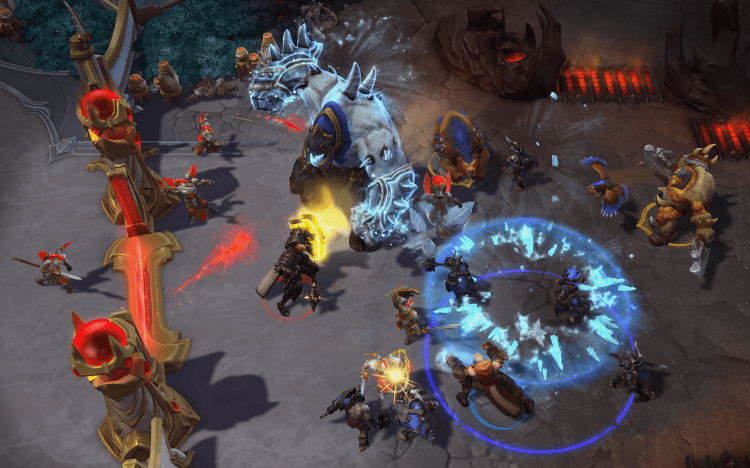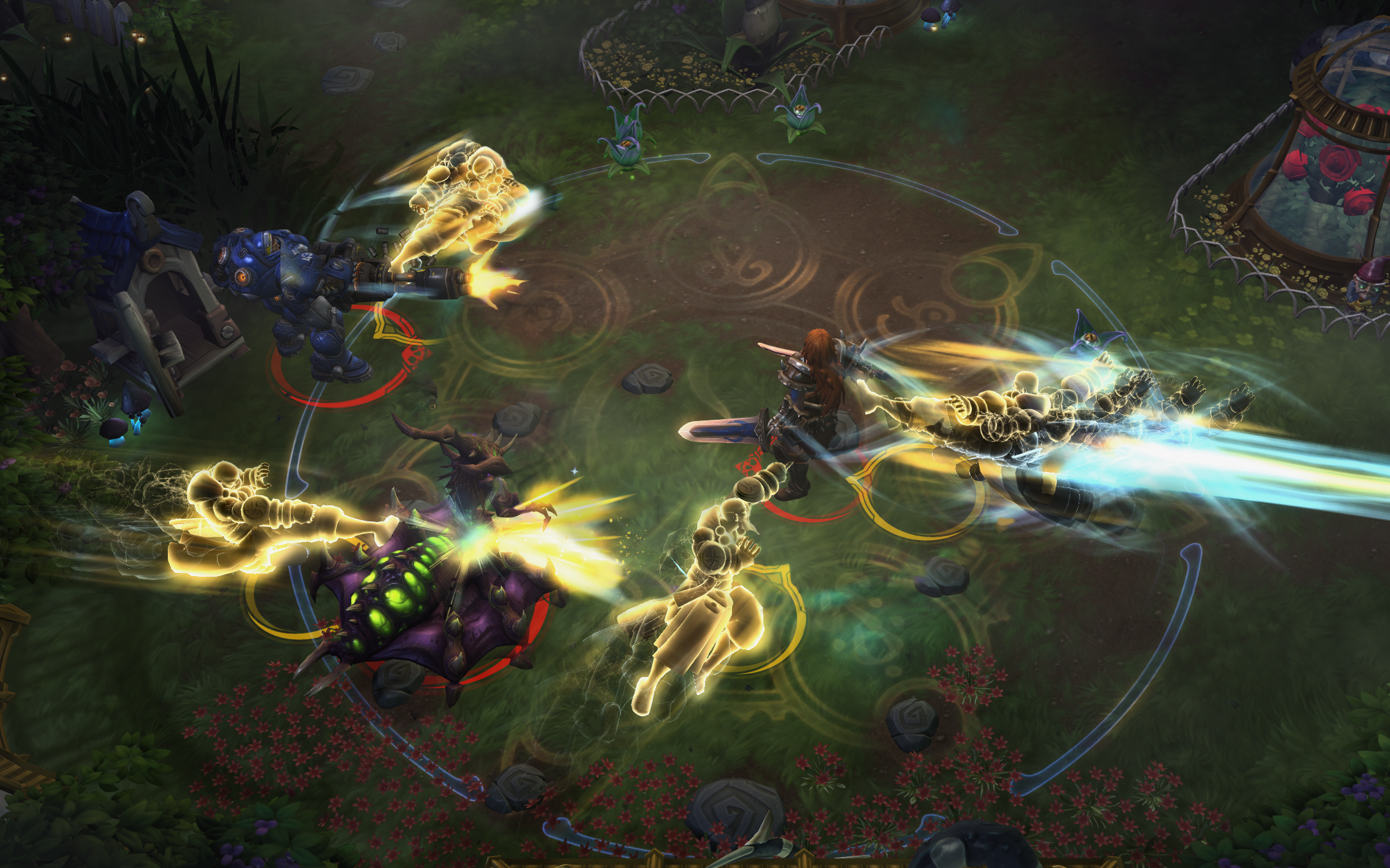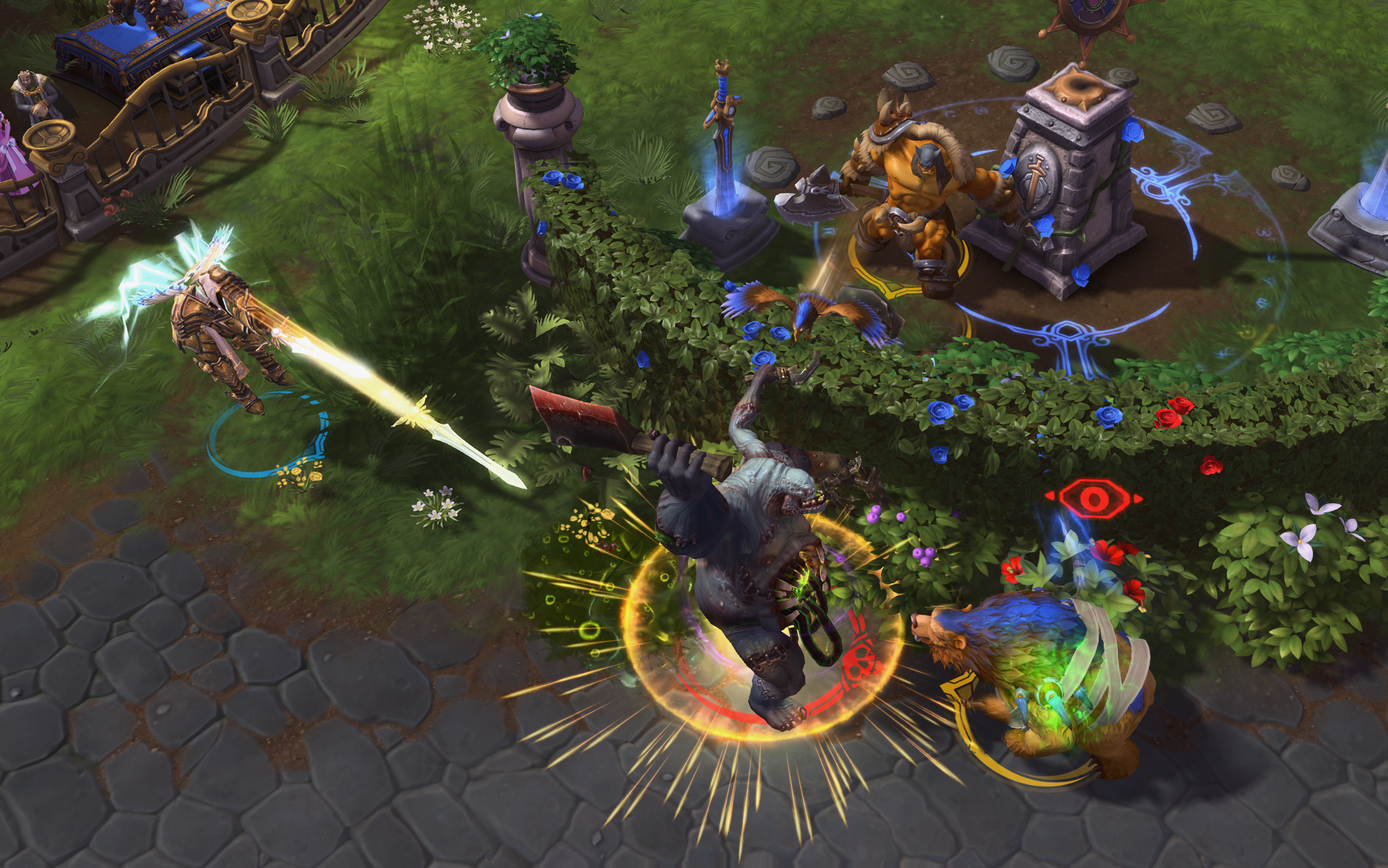Start planning your Heroes of the Storm strategy now, folks.
We asked designer Kent-Erik Hagman from Blizzard Entertainment to tell us his best tips for playing the new content that the publisher announced at GamesCom for the free-to-play massive online battle arena game. (See our story on the announcement.) This includes the heroes Kharazim, Rexxar, Artanis, and the StarCraft medic; and the Infernal Shrines map.
The first hero, Kharazim, goes live in a patch that launches tomorrow. The rest, and the Infernal Shrines map, comes in future patches.
Hagman ran down what makes each of these new things different from what’s already in the game — and what you should play up or watch out for. His work focuses on hero design and he talks a mile a minute, so let’s dive right in.
The new Diablo monk, Kharazim
Kharazim went active August 10 for players on the public test realms. Those that try him out will find a different healing and support experience compared to existing heroes, Hagman said.
“We knew we wanted to get a Diablo support in there,” he said. “Monk was my first level 60 in [Diablo III] vanilla, and the same for a couple other guys on the team. So we were really excited to get it in there.”
At the same time, they wanted to be sure that the character didn’t play like a support version of [Warcraft characters] Illidan or Chen, he said.
“He’s very inspired by D3. We definitely wanted to stick as closely as we could to that version of the kit while still bringing out the support version,” he said. “So while we definitely wanted to let him customize it, a little like Tyrande and Tassadar, so he could be a little more damage-y, we wanted to make sure he felt like he could solo-heal a team. He definitely can. I’ve done it quite well and it’s really fun.”
That doesn’t mean that a traditional healing mindset will help you here. The key to playing Kharazim well is fine control of how he moves, Hagman said.
“You think completely differently. Your heal is a melee [area of effect] around you. He shares one similarity with [panda cub] Li Li, in that position is everything,” he said. “With Li Li, you want to stay in the back and stay safe, but be near the guys you want to heal. Whereas with Kharazim, you want to dart around. You’re much more like, I want to be close at this moment, or I want to be close at that moment, while you’re darting around the battlefield.”
People who can’t effectively move and cast at the same time will want to stay far, far away from Kharazim. His Radiant Dash ability moves him instantly to an ally or enemy, where he can attack and cast his heal and then leap away (the ability has two charges, which accumulate over time.)
“You’re constantly looking at the positioning of teammates and enemies and just dancing all over the place,” Hagman said.
Like both of the announced healers, he’ll take some work to master, he said. So give yourself time to practice before taking him out for real matches. The PTR is one opportunity.
“Play him a lot before you figure out if you’re good with him. He takes a while to get used to,” he said. “It can be easy to think that his healing capability is not there, because you may not see the numbers you’re used to right away. It really is a player skill thing, though. He really can solo heal, and he can do it fantastically. It just takes a different mindset than our other healers.”
Your trait choice is important, he said. Two of Kharazim’s three traits are healing-related. Transcendence causes every third attack by the monk to heal the ally nearby with the lowest health. With Insight, every third attack returns mana, which can then be used for other heals.
“I’d say you’ll have to play 10 games with each trait to figure out how to play properly with each one,” Hagman said. “You need to manage your mana well if you don’t take the mana one, and you need to manage your positioning.”
The overall playstyle is a little frenetic and a lot of fun, he said.
“Kharazim is one of my most favorite heroes,” he said. “I’ll be buying him on day one. He’s so active. You’re always thinking, there’s always something to do. There are so many cool plays you can pull off with him.
The Warcraft hunter/ranged warrior, Rexxar
The Heroes of the Storm team has been enthusiastic about Rexxar for quite a while, Hagman said. He was originally slated for March or April, before the MOBA even officially launched in June.
“He and Kael’thas were supposed to come out together as part of a Horde bundle thing, and our schedule just blew up in general, and then there was [the hero and game content event] Eternal Conflict, and Rexxar just fell behind,” he said. But that didn’t mean they forgot about him.
“This is the Warcraft 3 team, and they love Rexxar. This is one of the heroes that our artists have always wanted to do, and they’ve had the model for him ready,” Hagman said.
The key to Rexxar’s gameplay is his pet bear, Misha. The duo was inseparable in the Warcraft and World of Warcraft games, and the HotS team made this the hunter’s core mechanic.
“We really wanted to do the idea of the ranged warrior, the guy who’s completely different because his tankiness comes not through him but through his permanent pet,” he said. “But we wanted to be sure we differentiated it. We didn’t want it to feel like you were playing two-unit Lost Vikings. Your bear works a lot more like a WoW hunter pet — in fact, that’s kind of where we were going with that.”
That makes your biggest challenge as a player figuring out how to manage Misha. Her positioning, health, lifespan, and movement can mean the difference between happily annoying your enemies to death or playing as a severely weakened hero.
“She is everything for your kit,” Hagman said. “When she dies in combat, she’ll resurrect after a few seconds. It scales over time; early game, she comes back pretty quickly, but late game she’ll be down and out for 20-25 seconds. When that happens, your W and E [key] abilities grey out, because they are Misha abilities. One has Misha do a line stun, the other heals up Misha. Without Misha, you’re really half a hero in some regards.”




